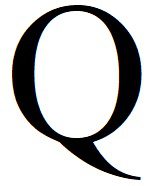The Queen DNA Project is a genealogical DNA study sponsored by the Queen Family Heritage Foundation, established for family history research and verification of the descendants of the Queen Families originally enslaved at the Maryland Jesuit plantations of Fingaul and White Marsh along the Patuxent River. The results of this study will help us determine which Queen family lines are related and which family lines share a common ancestor enslaved by the Jesuits in Colonial Maryland.
Background
Many of the QUEEN families in the United States can trace their origin to at least one ancestor from Maryland. It has been traditionally accepted that most of the African American families bearing the surname QUEEN descend from a woman named Mary Queen, most famously known as the “Poppaw Queen,” who arrived in Anne Arundel County, Maryland around 1715. There are OTHER QUEEN families that trace their lineage to Samuel Queen (originally “MacQueen”), who arrived in St. Mary’s County, Maryland around 1685 from England.
There are two principal lines of Mary Queen: Nanny Cooper and Phillis Queen, who were both enslaved at the Fingaul plantation in Anne Arundel County (in present-day Davidsonville) owned and operated by the Jesuit priests of the White Marsh Mission in Collington, Prince George’s County (in present-day Bowie). Many of their descendants assumed the surname QUEEN and were chiefly stationed in Anne Arundel and Prince George’s County, while others were dispersed throughout the network of Jesuit plantations in Maryland. Our surname derives from the matriarch: “Queen Mary.”
In 1796, many of the Queens won their freedom from Rev. John Ashton, while others remained enslaved by the Jesuits and were consequently transported to other Jesuit stations or sold off to other planters. In 1838, Thomas Mulledy sold the remaining slaves on the Jesuit farms to two planters in Louisiana to pay off the debts of Georgetown College.
Recent examinations of DNA matches have revealed that descendants of the QUEEN families from Maryland share close DNA connections to the descendants of the 272 plus enslaved individuals sold in the 1838 sale.
We are conducting a DNA study to determine how our families are related.
Goals of the Queen DNA Project:
- To identify “Most Recent Common Ancestors (MCRA)” shared between the QUEEN family groups and the Descendants of Jesuit Enslaved Ancestors
- To determine if there are any DNA connections to the lineage of Samuel Queen and Katherine Marsham
- To facilitate collaborations between researchers that share common ancestors
How It Will Be Done?
The Queen DNA Project will be performed using Ancestry.com and GEDMatch to analyze autosomal DNA matches shared between the various family groups. We will be using Family Tree DNA (FTDNA) to study the “Y” Chromosome of males that have a direct paternal lineage to “selected” male QUEEN ancestors.
We invite participation from descendants of all Queen family lines that can trace their origins to Maryland (1634–1870), including the descendants of other “Jesuit Enslaved Ancestors” and allied families.
How to Join
If you have ancestral connections to any of the Queen family lines found in Maryland between 1715 and 1838, you may be a good candidate for the Queen DNA Project.
You may be a descendant if:
- Your family tree bears the surname Queen (variations include: Quinn).
- Your family is African American or of mixed heritage (even if you’re DNA results reveal that you have 1% of West African origin.)
- Your family is Roman Catholic, or used to be Catholic.
- Your family has historic ties to southern Maryland, particularly Anne Arundel County and Prince George’s County, but also St. Mary’s County, Charles County (particularly Port Tobacco, MD), Howard County or Baltimore County.
- Your ancestors were enslaved by the Jesuits.
Click on the link below to review the lists of Family Groups to determine if you have ancestral connections to any of the Queen progenitors or allied families:
Once you have identified your ancestor(s) or a familial connection to any of the groups, click on the link below and complete the Queen DNA Project Application:
The project administrator will contact you with more detailed instructions. Please complete the Queen DNA Project Ancestor Chart. Your privacy and confidentially is priority. Your personal information will not be shared or published without your consent.
